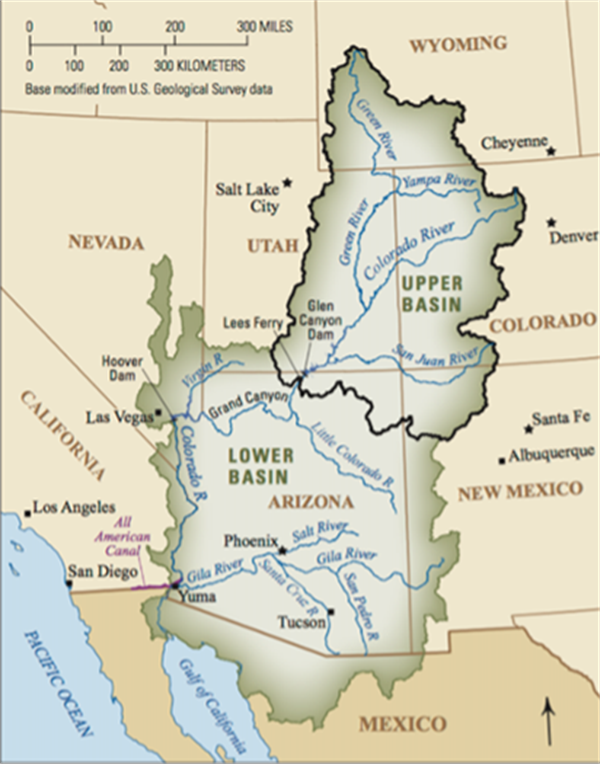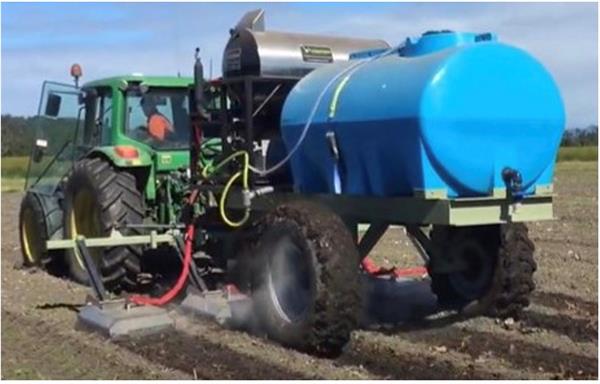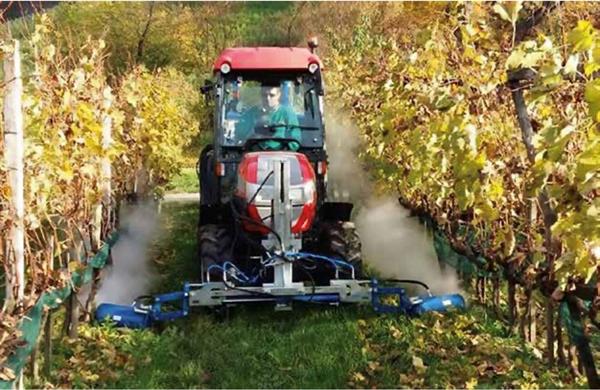
John Wesley Powell, the Civil War veteran who lost most of his right arm at the Battle of Shiloh, led his first expedition down the Green and Colorado Rivers, including the Grand Canyon in 1869. This provided the first exploration of the Colorado River basin by Americans of European descent and it began the process of understanding the nature of western territories of the United States, including Arizona (Figure 1).
The degree of aridity of this region was very strongly impressed upon Powell and he spent much of his life working to educate law and policy makers of the conditions prevalent in the western U.S. He worked diligently with lawmakers, government experts, and citizens to communicate the fact that the development of the western territories, which the nation was rapidly embarking on after the Civil War, would be limited due to the lack of water. His comments to the Montana Constitutional Convention in 1889 “All the great values of this territory have ultimately to be measured to you in acre feet” is a good example of his basic message and it has proven to be quite prophetic in our experiences of living and working in the desert Southwest in the 20th and 21st centuries.
Powell became the second director of the U.S. Geological Survey (USGS) from 1881 to 1894. In this and similar capacities, he constantly advocated for policies for the development of the arid West that were consistent with the prevailing arid conditions. As the lands in the western U.S. were being developed, the need for land “reclamation” was recognized. It was 120 years ago this week, on 17 June 1902 that Theodore Roosevelt signed the Reclamation Act and the U.S. Reclamation Service (USRS) was formed within the USGS under the Secretary of the Interior Ethan Allen Hitchcock. The new USRS was given the responsibility of studying potential water development projects in each western state with federal lands. Revenue from the sale of federal lands was the initial source of the USRS funding.
Thus began the process of the USRS in the development of about 30 western water projects between 1902 to 1907. In 1907, the Secretary of the Interior separated the USRS from the USGS and created the Bureau of Reclamation (BoR) as a distinct entity within the Department of the Interior. The Boulder Canyon (Hoover Dam) project was authorized in Congress in 1928 and funded by general funds appropriated by Congress to the BoR, and from that the development of Lake Mead began. Lake Mead is the main storage reservoir for the lower basin of the Colorado River.
In the late 19th and early 20th centuries, efforts in the western U.S. to develop lands for agriculture encountered problems with lands and soils that were found to be unsuitable for irrigation, often due to salinity, sodicity, and drainage problems. The “reclamation” of these lands became an important part of the BoR objectives and operations. All this development was dependent on the availability of water and good land and water management capacities.
During the 20th century, the BoR was responsible for some tremendously large and ambitious projects, including Boulder Dam, Grand Coulee Dam, Glen Canyon Dam, and many others. Today, the BoR operates in 17 western states with water and electrical power projects with more than 600 dams, reservoirs, powerplants, and canals. The BoR is the largest wholesaler of water in the U.S. and supports irrigation water storage and conveyance throughout the west on farmlands that produce more than 60% of the nation’s vegetables and 25% of the fruit and nut production in the country. The BoR is the second largest producer of hydroelectric power in the U.S. with 53 powerplants. The western U.S. development and population is heavily dependent on the BoR water and power works.
In Arizona and the desert Southwest, the lands and people here today have a very close relationship to the BoR for water and electrical power. All the lands along the mainstem of the Colorado River and the Central Arizona Project (CAP) are intimately connected to the BoR. Our efforts to deal with the water shortages on the entire Colorado River system are some of the greatest challenges this region and the BoR have faced since the early days of development in the 19th century.
Thus, there are many participants in the process of dealing with the current water shortage on the Colorado River system, including the U.S. Department of the Interior, the BoR, and all the basin states. An accentuating feature of the current water shortage on the Colorado River is due to the fact that for the past 22 years, the average annual flow in the Colorado River has been ~ 12.4 million acre-feet (maf) while the Colorado River water is budgeted for a total of 16.5 maf of allocations between U.S. states and Mexico.
Essentially, all of us living in the desert Southwest are in this together; including agricultural, urban, and tribal entities. All parties involved must work together to resolve this disparity between the water that the river is providing and the greater amount that is desired and allocated. The issues and general situation that we are facing has an urgency that requires immediate attention. I remain hopeful that we can meet the challenges of our time as our predecessors did in the past.

Hi, I’m Chris, and I’m thrilled to be stepping into the role of extension associate for plant pathology through The University of Arizona Cooperative Extension in Yuma County. I recently earned my Ph.D. in plant pathology from Purdue University in Indiana where my research focused on soybean seedling disease caused by Fusarium and Pythium. There, I discovered and characterized some of the first genetic resources available for improving innate host resistance and genetic control to two major pathogens causing this disease in soybean across the Midwest.
I was originally born and raised in Phoenix, so coming back to Arizona and getting the chance to apply my education while helping the community I was shaped by is a dream come true. I have a passion for plant disease research, especially when it comes to exploring how plant-pathogen interactions and genetics can be used to develop practical, empirically based disease control strategies. Let’s face it, fungicide resistance continues to emerge, yesterday’s resistant varieties grow more vulnerable every season, and the battle against plant pathogens in our fields is ongoing. But I firmly believe that when the enemy evolves, so can we.
To that end I am proud to be establishing my research program in Yuma where I will remain dedicated to improving the agricultural community’s disease management options and tackling crop health challenges. I am based out of the Yuma Agricultural Center and will continue to run the plant health diagnostic clinic located there.
Please drop off or send disease samples for diagnosis to:
Yuma Plant Health Clinic
6425 W 8th Street
Yuma, AZ 85364
If you are shipping samples, please remember to include the USDA APHIS permit for moving plant samples.
You can contact me at:
Email: cdetranaltes@arizona.edu
Cell: 602-689-7328
Office: 928-782-5879
Vol. 13, Issue 2, Published 1/26/2022
Public health and environmental concerns about the use of herbicides in addition to the rise in the number of herbicide resistant weeds has led to increased interest in non-chemical methods for weed control. Steam application is one technique that is gaining popularity as an alternative to applying glyphosate and other herbicides in public areas such as parks and school yards. Steam kills weeds by heating plant tissue to levels sufficient to rupture plant cell walls. As you might imagine, the method is energy intensive and slow. To kill even small weeds, exposure to superheated steam for several seconds (2-4) is required (Upadhyaya et al. 1983).
Steam is also used to control weeds in commercial agriculture. There are several manufactures of equipment designed for use in orchards, vineyards and even row crops (Fig. 1-2) (M.M. S.r.l., Modena, Italy; WeedTechnics, Terry Hills, NSW, Australia). These types of machines are equipped with high powered steam generators (200 HP) that convert water to steam at a rate of about 170 gal/hr. Recommended travel speeds are 1-2 mph depending on weed species and density. For orchards and vineyards, steam is typically applied in bands using steam hoods mounted on arms that extend to the crop row (Fig 2).
Despite being organically compliant and indifferent to herbicide resistant weeds, use of steam for post emergence weed control in commercial agriculture has seen limited adoption. A major limitation is that steam provides only partial weed control. Large, susceptible weeds die back, but tend to regrow 3-4 weeks after application and follow up applications are required. Further, some weed species are tolerant to steam when applied at reasonable travel speeds and rates. Abdulridha et al. (2019) investigated the use of steam for weed management in citrus. At travel speeds of 1 mph, goatweed and sedges were controlled (>72%), but Florida pusley and guinea grass were not (< 36%). Other researchers reached similar conclusions; although steam treatment is effective on small weeds (2 true leaves or smaller), control of large weeds is highly dependent on weed species with mortality rates ranging from 100% to 0% (Merfield et al. 2017).
Except for some very specific circumstances, use of steam for post emergence weed control is probably best left to urban areas where cost and time required for application are not as critical as they are in commercial agriculture.
References
Abdulridha, J.J., Kanissery, R.G., McAvoy, C.E. & Ampatzidis, Y.G. Evaluation of steam application for weed management in citrus. Appl. Eng. in Agric.,35(5): 805-814.
Merfield, C.N., Hampton, J.G. & Wratten, S.D. 2017. Efficacy of heat for weed control varies with heat source, tractor speed, weed species and size. New Zealand J. Agric. Res., 60(4): 437-448.
Upadhyaya, M.K., Polster, D.F. and Klassen, M.J. 1993. Weed control by superheated steam. WSSA Abstracts, 33, 115.

Fig. 1. Applying steam post emergent weed control. (Photo credits: Weedtechnics).

Fig. 2. Applying steam to organically control weeds in a vineyard. (Photo credits: M.M. S.r.l).
Because there are so few selective herbicides registered for use in lettuce, it is necessary to kill as many weeds as possible prior to planting. Fumigants, flooding and solarization will kill weed seeds but it will be necessary to germinate them first for most herbicides to be effective. Almost any herbicide can be used preplant that is registered for “fallow” conditions as long as the preplant and preharvest intervals are observed. The following table summarizes the most commonly used herbicides for ground preparation in lettuce.
This time of year, John would often highlight Lepidopteran pests in the field and remind us of the importance of rotating insecticide modes of action. With worm pressure present in local crops, it’s a good time to revisit resistance management practices and ensure we’re protecting the effectiveness of these tools for seasons to come. For detailed guidelines, see Insecticide Resistance Management for Beet Armyworm, Cabbage Looper, and Diamondback Moth in Desert Produce Crops .
VegIPM Update Vol. 16, Num. 20
Oct. 1, 2025
Results of pheromone and sticky trap catches below!!
Corn earworm: CEW moth counts declined across all traps from last collection; average for this time of year.
Beet armyworm: BAW moth increased over the last two weeks; below average for this early produce season.
Cabbage looper: Cabbage looper counts increased in the last two collections; below average for mid-late September.
Diamondback moth: a few DBM moths were caught in the traps; consistent with previous years.
Whitefly: Adult movement decreased in most locations over the last two weeks, about average for this time of year.
Thrips: Thrips adult activity increased over the last two collections, typical for late September.
Aphids: Aphid movement absent so far; anticipate activity to pick up when winds begin blowing from N-NW.
Leafminers: Adult activity increased over the last two weeks, about average for this time of year.







